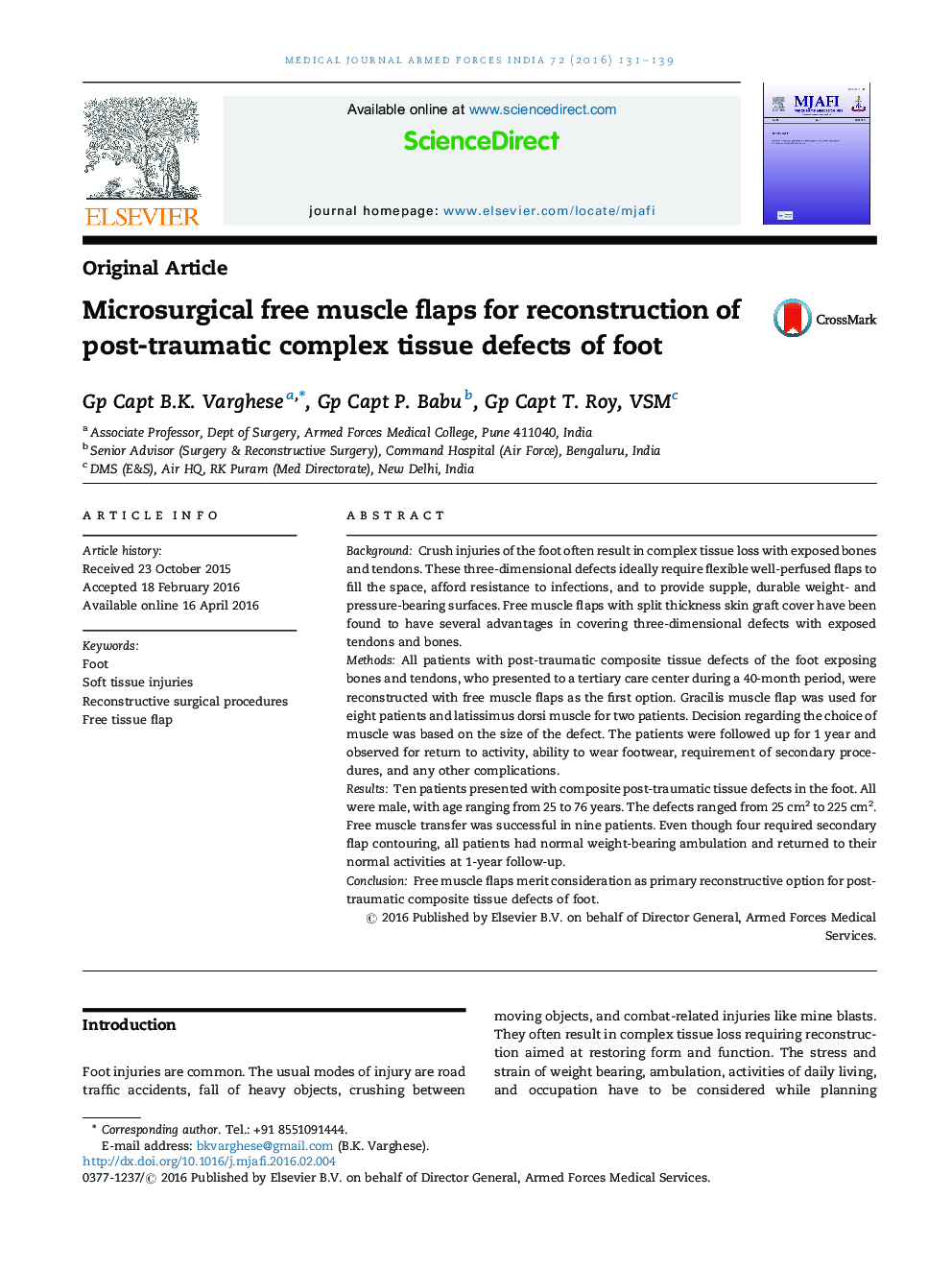| Article ID | Journal | Published Year | Pages | File Type |
|---|---|---|---|---|
| 3160910 | Medical Journal Armed Forces India | 2016 | 9 Pages |
BackgroundCrush injuries of the foot often result in complex tissue loss with exposed bones and tendons. These three-dimensional defects ideally require flexible well-perfused flaps to fill the space, afford resistance to infections, and to provide supple, durable weight- and pressure-bearing surfaces. Free muscle flaps with split thickness skin graft cover have been found to have several advantages in covering three-dimensional defects with exposed tendons and bones.MethodsAll patients with post-traumatic composite tissue defects of the foot exposing bones and tendons, who presented to a tertiary care center during a 40-month period, were reconstructed with free muscle flaps as the first option. Gracilis muscle flap was used for eight patients and latissimus dorsi muscle for two patients. Decision regarding the choice of muscle was based on the size of the defect. The patients were followed up for 1 year and observed for return to activity, ability to wear footwear, requirement of secondary procedures, and any other complications.ResultsTen patients presented with composite post-traumatic tissue defects in the foot. All were male, with age ranging from 25 to 76 years. The defects ranged from 25 cm2 to 225 cm2. Free muscle transfer was successful in nine patients. Even though four required secondary flap contouring, all patients had normal weight-bearing ambulation and returned to their normal activities at 1-year follow-up.ConclusionFree muscle flaps merit consideration as primary reconstructive option for post-traumatic composite tissue defects of foot.
